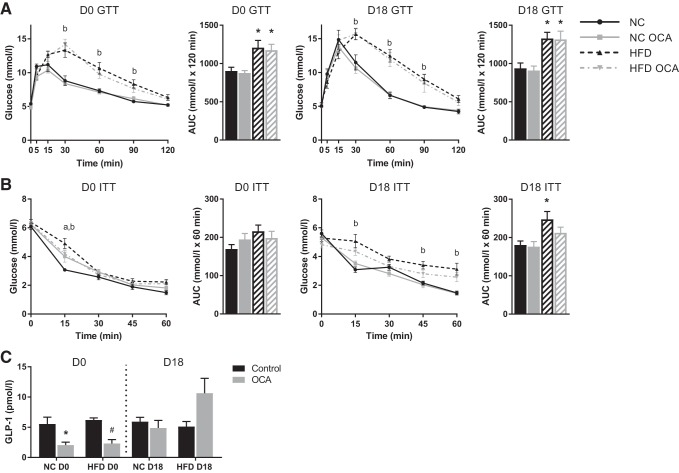Fig. 2.
Obeticholic acid (OCA) does not improve glucose tolerance in high-fat diet (HFD)-fed mice. A: glucose tolerance tests (GTT) were performed on day 16 of pregnancy [or equivalent for nonpregnant (D0) controls]; n = 7–10 mice per group. B: insulin tolerance tests (ITT) were performed on day 17 of pregnancy (or equivalent for D0 controls); n = 7–11 mice per group. P < 0.05 as determined by two-way repeated measures ANOVA followed by Tukey’s multiple comparisons test; a, normal chow (NC) vs. NC OCA; b, NC vs. HFD. For area under the curve (AUC), *P < 0.05 vs. NC, as determined by one-way ANOVA followed by Tukey’s multiple comparisons test. C: glucagon-like peptide 1 (GLP-1) concentrations were measured in plasma collected from the portal vein upon euthanization at gestational day 18 (D18) (or equivalent for D0 controls). *P < 0.05 vs. NC, #P < 0.05 vs. HFD, as determined by one-way ANOVA followed by Tukey’s multiple comparisons test; n = 6–8 mice per group. Data are expressed as means ± SE.

